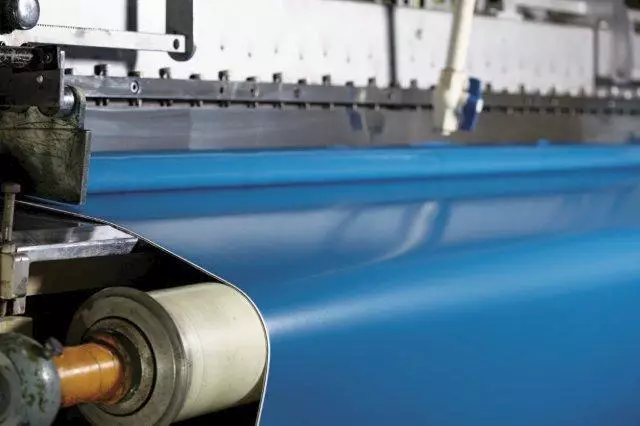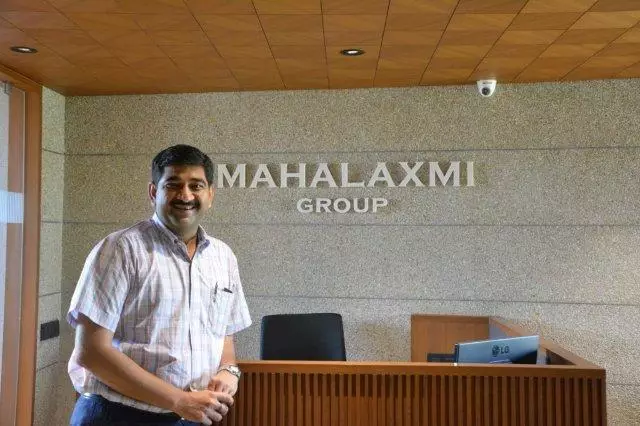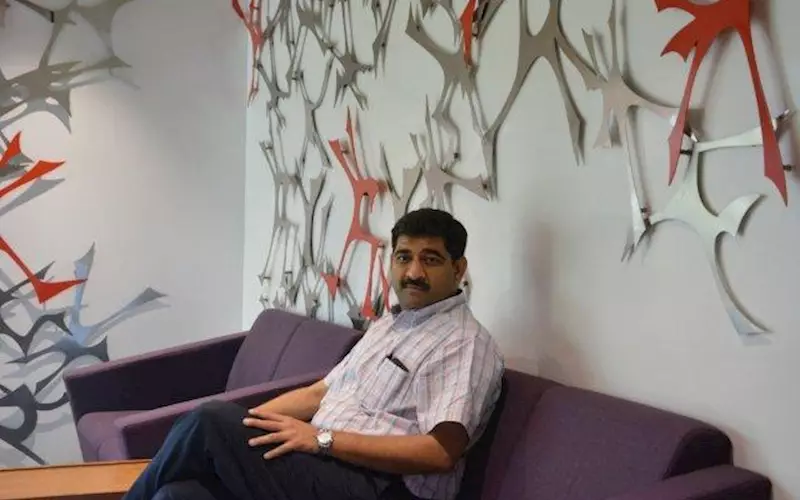Resolving the offset blanket condundrum in India - The Noel D'Cunha Sunday Column
Mahalaxmi RubTech's managing director, Rahul Parekh tells the PrintWeek India team that his company had added offset printing blanket to its portfolio of textile blanket, and by doing so has brought competition in the print market where even the ‘stock lot’ of imported offset blankets are considered superior.
This Sunday Column is about Ahmedabad-based RubTech's market share and competition in the print.
15 Jul 2016 | By Noel D'Cunha
PrintWeek India (PWI): You celebrated 50 years of the Group Mahalaxmi’s existence…
Rahul Jeetmal Parekh (RJP): Yes. The Group was incorporated in 1965. But
Mahalaxmi RubTech (MRT) was incorporated in 1991. In 1992, we started production of textile printing blankets and rubber-coated fabrics. In 2013, we started manufacturing offset printing blankets under the brand Imprint.
PWI: You have been manufacturing textile printing blankets, so getting into offset printing blanket manufacturing would have been a natural progression ...
RJP: Yes, I would say so. This is because there are some similarities or overlaps in the two technologies. So in a way, yes, it was a natural progression.

A section of the plant in Ahmedabad that can produce about 1,50,000 sq/metre offset blankets per year
PWI: No one in India manufactures offset printing blankets, it would have been a challenge for MRT. Were there any technology barriers?
RJP: Yes, no one does, and that was one of the driving force. Of course, there were technology barriers but we could find good consultants with lots of experience in making offset blankets, with whose guidance we were able to set up this plant.
PWI: You custom design and built the machinery. Why so?
RJP: Yes. There are no ready machines available to manufacture offset blankets. See, there are very few known manufacturers of offset blankets across the world. Hence it is not commercially viable for any machine manufacturer to make machines for producing blankets.
We conceived the idea of setting up the offset blankets plant in 2010, debated over eight to ten months on the philosophy we need to follow, because I believe that every philosophy has its own dynamics. Fortunately for us, with the guidance we received from our expert consultants, we have a plant which is optimum.
PWI: What do you mean by optimum?
RJP: It means, the plant uses advanced manufacturing technologies, with production process and flow such that we are able to consistently produce uniform blankets.
PWI: You mean uniform quality blankets?
RJP: Exactly, and it’s one of the very important aspects of blankets. Plus doing it in India with no historical understanding or knowledge of offset blanket manufacturing, and having to train the manpower, was a challenge.
Hence, we were clear in our mind that whichever machineries operating at the plant would be as automated as possible with least human intervention, for a smooth and consistent production process.
PWI: Setting up a plant is one part, but it certainly wouldn’t have been easy to debut in a market where established international players already exist?
RJP: No, that was not really a deterrent. We had the confidence going from our ability of being the only company in the world to make its own fabrics for manufacturing printing blankets.
So it naturally gave us a competitive edge not only in terms of quality but pricing
as well.
PWI: Manufacturing fabrics in-house can be one of the advantages, but will it help you dislodge top brands?
RJP: No, I don’t think we have dislodged any of the brands as yet. At best we may have impacted their overall sales. And in the last three years, we have also been able to find space among the A+ printers who were earlier sceptical of using an Indian blanket. We are now gradually being recognised for our consistency, and that’s encouraging.
PWI: We hear that few big brands in offset blanket dump their second choice material in the Indian market. How much of a competition are such practices to your business?
RJP: Competition comes from the imported choice two and choice three material, or what is known as the ‘stock lot’ materials that are offered at very cheap prices. This is more so in the mid- and low-segment of the print pyramid, which is a huge pie of the market. And the competition is not just about price, but unfortunately, also its perceived quality of such ‘stock lot’ material sold in the market.

PWI: You have a range of products, and so does your competitors. When you compare apple-to-apple, where do you fit?
RJP: We have a wide product range, perhaps at par with the best in the world. But what is unfair, even to the printers is, when these imported choice two and choice three blankets are sold as first-quality blankets. And sadly, a majority of printers do not know that the blankets that they are buying are not Ffirst-quality blankets.
Unfortunately, we always associate anything that is imported from Europe, Japan or the US, as being of superior quality. And therefore, when there are issues or problems with print quality, the printers think that they are doing something wrong without doubting the quality of the blanket.
PWI: It’s been three years since you have begun manufacturing; have you seen any changes?
RJP: The quality, consistency and durability of our printing blankets is beginning to be recognised. I can say this because I see the growth in our own sales and consequently this has also helped our dealers to grow their businesses and market share. Not only that, we also see more dealers showing interest to partner with us and promote our range of printing blankets.
PWI: What’s your market share?
RJP: There are no offset blanket manufacturers in India, and when blankets are imported into India, they come under several heads. It comes as a rubber sheet, waste or scrap, and sometimes it comes in pieces in kilograms or in sq/metres. Hence this is a difficult question to answer.
But now we are beginning to see growth in our sales this year as compared to last year. In the domestic market, TechNova is our partner for marketing and sales, pan India.
PWI: What is your way of telling the printers that your blanket is “the” blanket to use?
RJP: We tell them to take trial on any machine they like, and that is the best statement one can make. We also invite them to our factory, see the set-up, understand the way we make blankets, the quality control measures we take, all of that. So they do understand and appreciate it.
PWI: We met a printer in Rajkot, who said, he lets companies do trial on his press, be it blanket, ink or any consumables. If the product yields better result, he will sign a year’s contract for its supply, if it fails, the company will compensate for the time lost in the trial.
RJP: Fair enough... We had our own brochure to print, and we had opted for one of the most reputed printers in Ahmedabad to do the job. Coincidently at the same time our representatives offered our blankets for trial as well. The printer was willing to take the trial of our blanket but with the condition that they would only take the trial by printing our own brochure. We said fine. The brochure was printed with 10 micron FM screening with excellent print results.
PWI: Three years on and you were at Drupa. Not something that many have done.
RJP: In offset printing, Drupa is the biggest exhibition. And fortunately, we are also finding recognition from the export market, because the choice factor or the stock lot material does not exist in these markets. There, the products have to be fairly priced and quality should be comparable to the best. I believe, we will see a much bigger growth in the export market.
PWI: So, if the floodgates open – both in the national and international market, do you have the capacity to manufacture the increased requirement? For the international market, do you plan to set up overseas plants?
RJP: We have set up a plant in Ahmedabad that can produce about 1,50,000 sq/metre per year. And yes, if the floodgates open, we have space to add capacities.
We have no plans for overseas ventures. I am very sure that we will only ‘Make in India’, even for the international markets.

PWI: What do you think should printers look for in the blanket?
RJP: There are several factors which needs to be considered while selecting the blanket. These primarily include what kind of substrate you are printing, what kind of machine you have, and what kind of pressroom chemicals you use. Some of these would affect the type of blanket that you want to use. Secondly, the kind of print accuracy that you are looking for, the dot sharpness that you desire. And thirdly, do you want a combo blanket where you will also want to print UV or you want to print with conventional inks and you don’t want to change blankets. So, there are multiple factors like that. Upon knowing that, a printer can then decide the type of blanket.
PWI: What do Indian printers ask you when you approach them as a blanket manufacturer?
RJP: I think first they want to be qualitatively convinced. However, even if our blankets are qualitatively good, price is a big factor, at least for certain segments of the market.
PWI: An insight into what’s your R&D set-up like?
RJP: We have all the required equipments to either test the incoming raw materials or conduct all the tests during the production or after the production. We have few equipment that are used primarily for R&D work. It could be for developing new rubber compounds, developing new fabric constructions or developing an altogether new blanket design. Having said that we still need a few more and we are already working towards that. Unfortunately, again not all of these equipment are available off the shelf.
PWI: How big is your team in India?
RJP: We have a total of about 70 people working on offset blankets.











 See All
See All